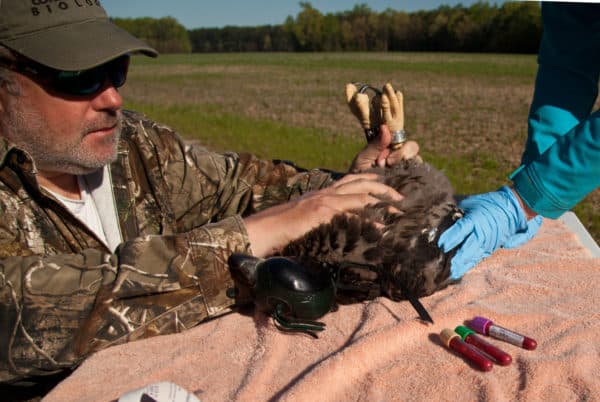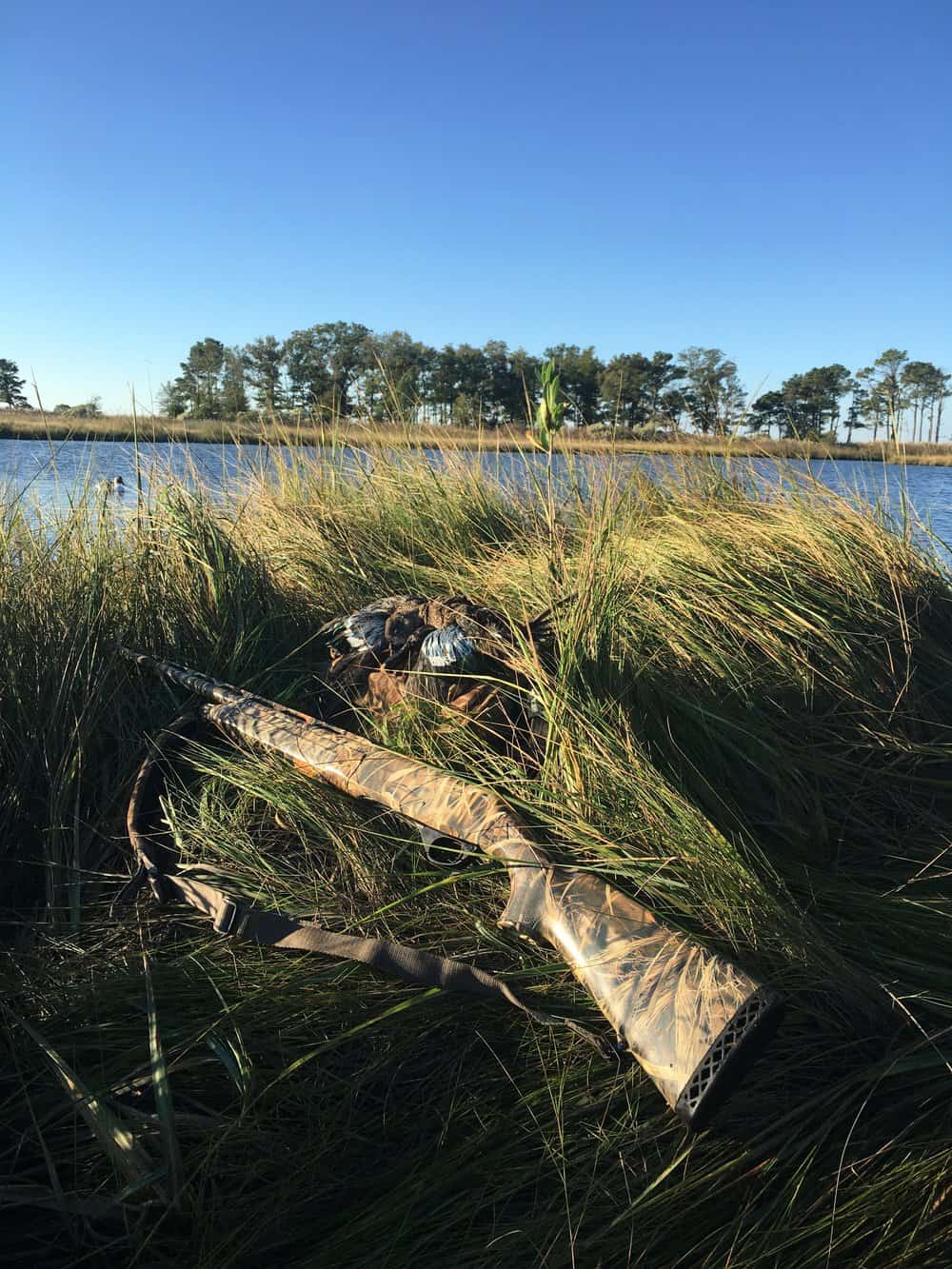An eaglet during an exam near the James River. Photo: Center for Conservation Biology/Bryan Watts
There’s encouraging news for one of the region’s most beloved birds, according to a new report from the Center for Conservation Biology (CCB).
Researchers tested the blood of baby eagles on the lower Chesapeake Bay, and found a noticeable drop in contaminants that stopped eagles from reproducing in the past.
The CCB, a College of William and Mary and Virginia Commonwealth University research group, and the National Park Service tested the blood of eaglets from 25 broods across the lower Chesapeake to check for contaminants including polychlorinated biphenyls (PCBs), heavy metals, and organochlorine pesticides (OCPs).
The Center says the sampling, which took place between 2016 and 2018, was “a periodic ‘checkup’ to monitor exposure for breeding pairs under the care of the park service.”
The testing results show relatively low levels of the various environmental contaminants. Lead and mercury in the samples collected were low and low to middle range, respectively, when compared to results from previous eaglet sample values. The CCB says none of the samples was near the threshold that is thought to cause reproductive problems.
PCB concentrations were also low in comparison to values elsewhere. While some of the highest PCB values came from the lower James River, the CCB says the results were a small percentage of the “reproductive impairment” threshold.

Photo: Center for Conservation Biology/Bryan Watts
Despite the species’ poor health in past years (the CCB notes that contaminant use in the 1940s and 1950s led to a nosedive in the population and some of “highest recorded” levels of contaminants in the 1970s), the new results are heartening. “The results of the blood tests conducted over the past three years are good news for the bald eagle population and for the improving health of the Chesapeake Bay,” says the CCB’s Bryan Watts.
James Riverkeeper Jamie Brunkow says that the region’s growing eagle population and the fact that fewer toxins are moving through the food chain are both encouraging signs given the lasting effects of past pesticide use. “It’s interesting that after decades the most common pesticide found is a remnant of DDT, the pollutant that devastated eagle populations, but reassuring that concentrations have diminished,” he adds.
Brunkow says that Virginia is close to reaching its goal for reducing PCBs in the tidal James River, which should improve the PCB levels found in Lower James River eagles.
Watts and Brunkow agree that it will take vigilance to continue the trend of decreasing toxins.
–Laura Adams Boycourt



